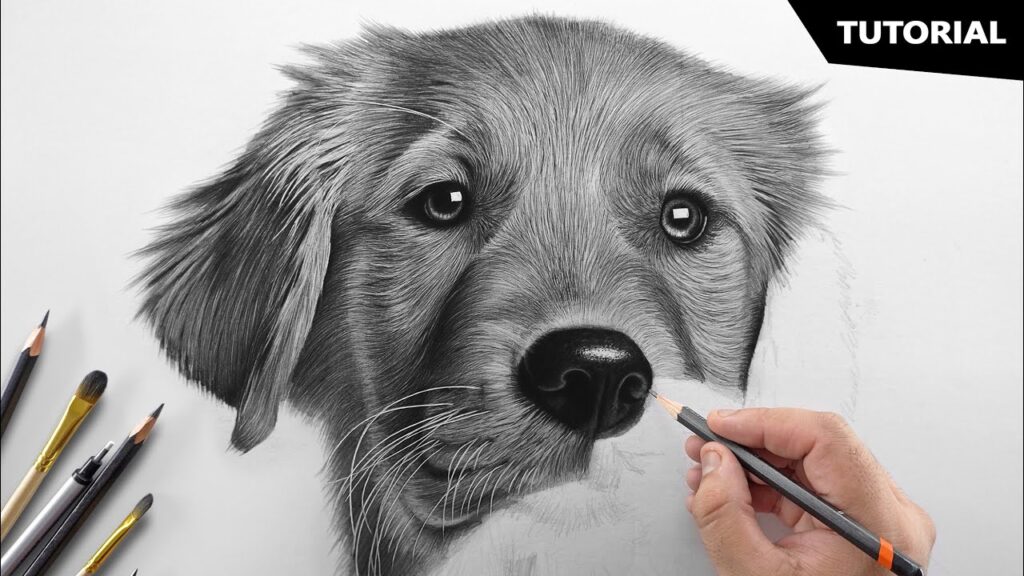How to Draw a Realistic Dog: A Comprehensive Guide
Drawing a realistic dog can be a rewarding yet challenging endeavor for artists of all skill levels. Whether you are a beginner or an experienced artist, understanding the techniques and steps involved in creating a lifelike representation of a dog is essential. This guide will provide you with a detailed, step-by-step approach to drawing a realistic dog, including tips, techniques, and resources to help you succeed.
1. Introduction
Dogs are beloved companions and come in various breeds, each with unique characteristics and features. Capturing the essence of a dog in a drawing requires attention to detail, an understanding of anatomy, and practice. This guide aims to equip you with the knowledge and skills needed to create a realistic dog drawing.
2. Materials Needed
Before you start drawing, gather the following materials:
| Material | Description |
|---|---|
| Pencils | Graphite pencils (HB, 2B, 4B, and 6B) for sketching and shading. |
| Eraser | A kneaded eraser for gentle corrections and a regular eraser for clean-up. |
| Paper | High-quality drawing paper or sketchbook. |
| Blending Stumps | For smoothing out pencil strokes and shading. |
| Ruler | To measure proportions and angles. |
| Reference Images | High-quality photos of dogs for accurate details. |
3. Understanding Dog Anatomy
Before you start drawing, it’s essential to understand the basic anatomy of a dog. Familiarizing yourself with the structure of a dog’s body will help you create a more realistic representation.
Key Anatomical Features
- Head: The shape and proportions of the head vary by breed. Pay attention to the size of the muzzle, ears, and eyes.
- Body: Dogs have a strong and flexible body structure. Note the length and width of the torso, legs, and tail.
- Legs: Observe the structure of the legs, including the joints and muscles. Dogs have four legs, each with distinct features.
- Tail: The tail varies in length and shape depending on the breed. It can be straight, curled, or bushy.
Basic Dog Anatomy Diagram
| Feature | Description |
|---|---|
| Head | Includes muzzle, eyes, ears, and forehead. |
| Torso | The main body structure, including the chest and abdomen. |
| Legs | Four legs with joints (shoulders, elbows, hocks). |
| Tail | Varies by breed; can be straight, curled, or bushy. |
4. Basic Shapes and Sketching
Start your drawing by breaking down the dog into basic shapes. This approach will help you establish the proportions and layout before adding details.
Step-by-Step Sketching Process
- Draw the Head: Start with a circle for the head. Add guidelines to help position the eyes, nose, and mouth.
- Outline the Body: Use an oval shape to represent the torso. Connect the head to the body using lines to form the neck.
- Add Legs: Sketch the legs using straight lines and circles for joints. Ensure that the legs are proportionate to the body.
- Position the Tail: Draw a line extending from the back of the torso to represent the tail’s position.
Example of Basic Shapes
- Circle: Represents the head.
- Oval: Represents the body.
- Lines: Represent the legs and tail.
5. Adding Details
Once you have the basic shapes in place, start adding details to your drawing. Focus on the unique features of the dog you are drawing.
Detailing the Face
- Eyes: Draw the eyes using almond shapes. Add pupils and reflections to give them life.
- Nose: Create the nose by drawing a rounded triangle. Add nostrils for realism.
- Mouth: Sketch the mouth with a slight curve to show expression.
Detailing the Body
- Fur Texture: Use short, quick strokes to represent fur. Vary the direction of the strokes to mimic the natural flow of the fur.
- Ears: Draw the ears based on the breed. They can be floppy, erect, or semi-erect.
- Legs and Paws: Add details to the legs, including muscles and joints. Draw the paws with attention to the shape of the toes.
6. Shading and Texture
Shading is crucial for creating depth and dimension in your drawing. Use different pencil grades to achieve various shades.
Techniques for Shading
- Hatching: Draw parallel lines close together to create shading.
- Cross-Hatching: Use intersecting lines to build up darker areas.
- Blending: Use blending stumps or your fingers to smooth out pencil strokes for a softer appearance.
Adding Depth
- Light Source: Determine where the light is coming from and shade accordingly. Areas away from the light source should be darker.
- Highlights: Leave some areas white or lightly shaded to represent highlights, especially on the eyes and nose.
7. Finalizing Your Drawing
Once you are satisfied with the details and shading, it’s time to finalize your drawing.
Steps to Finalize
- Review Your Work: Step back and assess your drawing. Look for any areas that need adjustment.
- Darken Outlines: Go over the outlines with a darker pencil to make them stand out.
- Erase Guidelines: Carefully erase any unnecessary guidelines without disturbing the main drawing.
- Add Final Details: Add any last-minute details, such as whiskers or additional fur texture.
8. Common Mistakes to Avoid
When drawing a realistic dog, it’s important to be aware of common mistakes that can detract from your work:
| Mistake | Description |
|---|---|
| Proportions | Ensure the head, body, and legs are proportionate. |
| Lack of Detail | Avoid skipping details; they add realism. |
| Ignoring Light Source | Always consider where the light is coming from for accurate shading. |
| Rushing the Process | Take your time to ensure accuracy and detail. |
9. Conclusion
Drawing a realistic dog requires patience, practice, and attention to detail. By following the steps outlined in this guide, you can develop your skills and create lifelike representations of dogs. Remember to observe real dogs and reference high-quality images as you practice. With time and dedication, you will improve your drawing abilities and create stunning artwork.
10. FAQ Section
Q1: What materials do I need to draw a realistic dog?
A1: You will need graphite pencils (HB, 2B, 4B, and 6B), an eraser, drawing paper, blending stumps, a ruler, and reference images.
Q2: How long does it take to draw a realistic dog?
A2: The time it takes to draw a realistic dog varies depending on your skill level and the level of detail you want to achieve. It could take anywhere from a few hours to several days.
Q3: Can I use digital tools to draw a realistic dog?
A3: Yes, digital tools like drawing tablets and software (e.g., Procreate, Photoshop) can be used to create realistic dog drawings.
Q4: Is it necessary to understand dog anatomy to draw one realistically?
A4: While it’s not strictly necessary, understanding dog anatomy can significantly improve the accuracy and realism of your drawing.
Q5: Where can I find reference images for drawing dogs?
A5: You can find reference images on websites like Unsplash, Pexels, or through a simple Google image search. Additionally, consider taking photos of dogs yourself for unique references.For more information on drawing techniques and art, you can refer to the Wikipedia page on Drawing.



